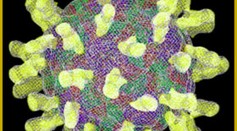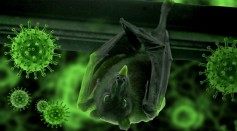viruses
Life on Mars, Moon? Mystery Viruses Detected in 15,000-Year-Old China Glacier

How Dirty Are Our Beds? A Microbiologist Explains How Germs Live on Mattresses
18 Bat Species in Switzerland Found Harboring Viruses from 39 Viral Families Including COVID-19
18 Bat Species in Switzerland Found Harboring Viruses from 39 Viral Families Including COVID-19
Nanoparticles in New Filter Membrane Material Shows Promise in Deactivating Viruses

‘Worrying’ Mutation Detected in the UK

Neuroscientists Isolate Promising Tiny Antibodies Produced by a Llama in Fight Against COVID-19

Cyberattack Could Trick Scientists Into Producing Dangerous Toxins or Viruses

Viruses Use Mimcry for Deception Similar to Plants and Animals

Scientists Say More Viruses Are Coming, Thanks to Massive Deforestation Fueling Infectious Diseases

Archaic Viruses Trapped in a Tibetan Glacier Is a Window Into What Kinds of Viruses Lived Epochs Before
Scientists Discover New Virus-Killing Protein to Destroy Viruses Related to HIV
Scientists are Closer than Ever to a Norovirus Vaccine
New Study Uncovers How Some of the World’s Deadliest Viruses Replicate
Most Popular

How Technology Is Changing the Real Estate Industry?

How a Plant-Based Diet Can Protect Against Breast Cancer: Insights from Nutrition Research

Study Reveals High Turnover in Scientific Research Careers: What This Means for Future Scientists

Why It's So Difficult to Lose Weight: The Biological Explanation Behind Obesity






